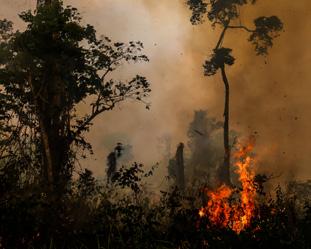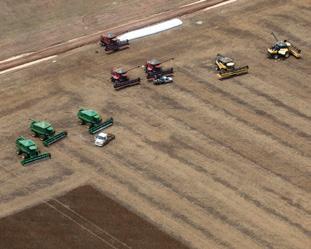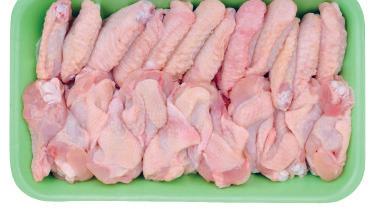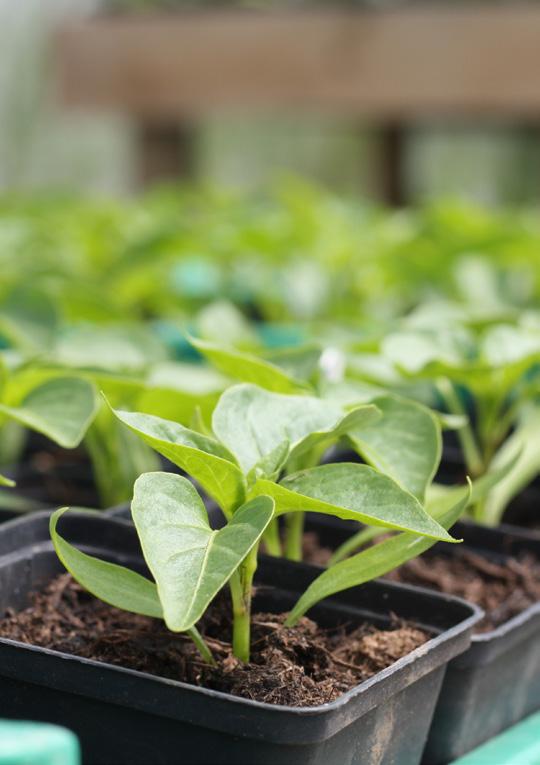
5 minute read
Devouring the land
‘Roughly 20% of soy exports and at least 17% of beef exports from [the Brazilian Amazon and Cerrado] biomes to the EU may be contaminated with illegal deforestation.’ 13
Raoni Rajão et al, Science July 2020
‘Led by President Jair Bolsonaro, who came into power in January 2019, the new administration has encouraged the clear-cutting of forests on private properties and public lands – in defiance of Brazil’s Forest Code law and the soy moratorium agreement, which bans the clearing of forests for soy production. The government has also dismantled a series of environmental protections meant to stop illegal deforestation in conservation units and Indigenous Peoples’ lands, staunch protectors of the country’s forests.’ 14

Universidade Federal de Minas Gerais (UFMG), July 2020
Tesco, correspondence with Greenpeace UK, 24 September 2019
Taking into account land used for feed production and grazing, livestock production already uses 77% of agricultural land worldwide, despite providing the global population with only 17% of its dietary energy and 33% of its dietary protein. 15 Yet the industry’s demand for land appears to be insatiable.
The two leading drivers of deforestation globally

– ahead of the mining and timber/pulp industries and notoriously destructive commodities such as palm oil, rubber and cocoa – are beef and soya. 16
The deforestation impact of the beef industry is felt most severely in South America. 17 As mentioned earlier in this report, the sector is one of the major contributors to deforestation in the wider Amazon region, with cattle ranchers responsible for
Supermarket packaged raw chicken wings and thighs. ©Levent Konuk


Opposite, from top:
25 November 2015, Uruará, Pará, Brazil: Forest fire in the Amazon. ©Lunae Parracho/Greenpeace
24 November 2015, Aripuanã, Mato Grosso, Brazil: Cattle in an embargoed area. ©Bruno Kelly/Greenpeace
23 March 2019, Formosa do Rio Preto, Brazil, 11°19’9.78” S 46°25’6.54” W: Harvest of soya in embargoed area of the Estrondo estate – Greenpeace Brazil documented violence against traditional Cerrado communities within the estate, where Bunge and Cargill both have silos. ©Victor Moriyama/ Greenpeace 80% of land clearing in every country with Amazon forest cover. 18
Soya is a key component of industrial meat production – an estimated 90% of soya beans produced globally are used as a protein source in animal feed. 19
Soya production has more than doubled since 1997, 20
driven by growing demand for animal feed to supply the factory farms that produce much of the meat and dairy sold by supermarkets and fast food chains worldwide. 21
In Brazil, soya production has more than quadrupled over the past two decades 22 and is projected to increase by another third over the next 10 years, with exports growing by 42%. 23 By the end of the next decade, a further 9.5 million ha 24 – an area three times the size of Belgium 25 – is forecast to be planted with soya within Brazil alone, putting even greater pressure on its forests and natural ecosystems.
In 2006, a Greenpeace campaign exposing the links between soya expansion and Brazilian Amazon deforestation led the major soya traders to agree a moratorium on the purchase of soya from farms within the region that had cleared forests after July that year (later revised to July 2008). 26 But while the moratorium has been fairly successful in halting direct Amazon deforestation by the soya industry (with the deforestation rate in the affected areas falling by over 80% 27 ), soya production in the Amazon has continued to ramp up. The area planted with soya increased by 3.5 million ha between 2006 and 2018 – with the expansion mainly occurring on land previously used to graze cattle, 28 which ranchers sell to soya farmers before moving on to develop new, often forested land. Selling land on for soya cultivation increases the financial viability of cattle ranching in the region (for example, the proceeds from selling a farm in Mato Grosso to a soya cultivator will be enough to pay for a much larger tract of land in Pará), meaning that soya is still a significant indirect driver of Amazon deforestation. 29 Moreover, the present government’s hostility to the Soy Moratorium may strengthen calls from the growers’ lobby Aprosoja for it to be abandoned altogether. 30
Also under serious threat from both cattle ranching and soya cultivation are the Cerrado dry forest and savannah biome in Northeast Brazil (the world’s most biodiverse savannah 31 ) and the Gran Chaco dry forest biome (the continent’s secondlargest forest after the Amazon 32 ), which covers parts of Argentina, Bolivia and Paraguay. 33 Neither the Soy Moratorium nor the G4 Cattle Agreement applies to these areas (a proposed extension of the former to the Cerrado came to nothing, despite two years of talks 34 ). The Cerrado has already lost half of its original vegetation to agricultural expansion, 35
while some 23% of the Gran Chaco had been converted to cropland or grazing land by 2017. 36 At that point there were already 2.6 million cattle 37 in Argentina’s Chaco Province (one of several provinces wholly or partly within the biome), with the provincial and federal governments incentivising production in forest areas 38 and reportedly aiming to double the size of the herd. 39
The UK imports roughly 3.2 million tonnes of soya each year, with a further 600,000 tonnes already embedded in imported meat and other products. 40
These imports are largely driven by consumption as feed in industrial animal agriculture – primarily chicken production, which in the UK is almost exclusively industrial. 41 Data from the soya industry itself indicates that meeting the UK’s annual demand for soya requires 1.4 million ha of land 42 – an area larger than Northern Ireland. 43 Approximately 68% of UK soya imports come from South America 44 and the commodity is a leading component of the UK’s deforestation footprint. 45











